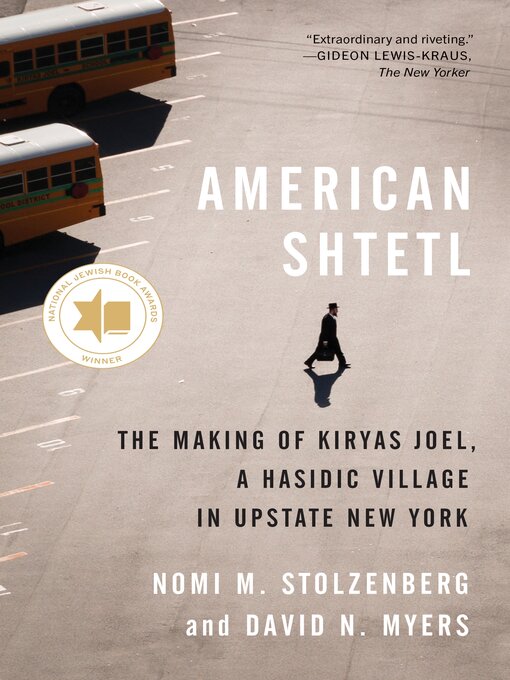A compelling account of how a group of Hasidic Jews established its own local government on American soil
Settled in the mid-1970s by a small contingent of Hasidic families, Kiryas Joel is an American town with few parallels in Jewish history—but many precedents among religious communities in the United States. This book tells the story of how this group of pious, Yiddish-speaking Jews has grown to become a thriving insular enclave and a powerful local government in upstate New York. While rejecting the norms of mainstream American society, Kiryas Joel has been stunningly successful in creating a world apart by using the very instruments of secular political and legal power that it disavows.
Nomi Stolzenberg and David Myers paint a richly textured portrait of daily life in Kiryas Joel, exploring the community's guiding religious, social, and economic norms. They delve into the roots of Satmar Hasidism and its charismatic founder, Rebbe Joel Teitelbaum, following his journey from nineteenth-century Hungary to post–World War II Brooklyn, where he dreamed of founding an ideal Jewish town modeled on the shtetls of eastern Europe. Stolzenberg and Myers chart the rise of Kiryas Joel as an official municipality with its own elected local government. They show how constant legal and political battles defined and even bolstered the community, whose very success has coincided with the rise of political conservatism and multiculturalism in American society over the past forty years.
Timely and accessible, American Shtetl unravels the strands of cultural and legal conflict that gave rise to one of the most vibrant religious communities in America, and reveals a way of life shaped by both self-segregation and unwitting assimilation.
- Available now
- New eBook additions
- A Family Affair: Bridgerton Read Alikes
- New kids additions
- New teen additions
- Most popular
- Try something different
- eBooks en Español
- See all ebooks collections
- Available now
- New audiobook additions
- New kids additions
- Most popular
- New teen additions
- Try something different
- See all audiobooks collections
- Check out a Magazine!
- Cooking & Food
- Fashion
- Home & Garden
- Lifestyle
- News
- Try something different
- Kids & Teens
- See all magazines collections


